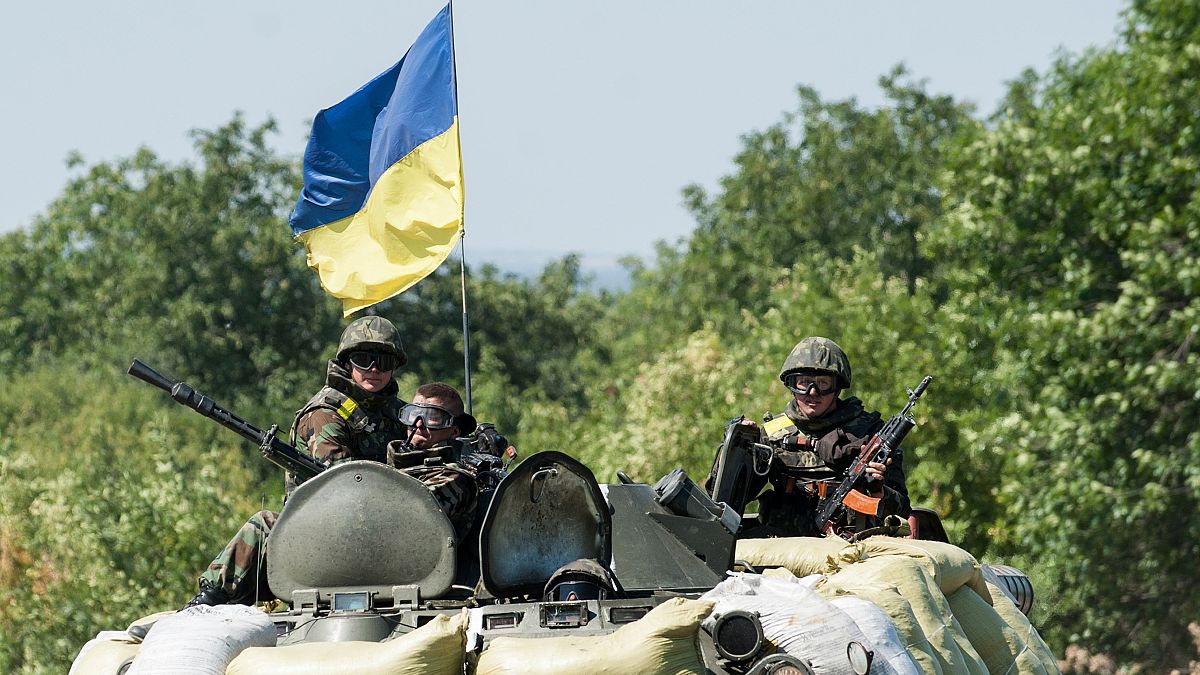World
Year in review: Ten defining moments for Europe in 2023
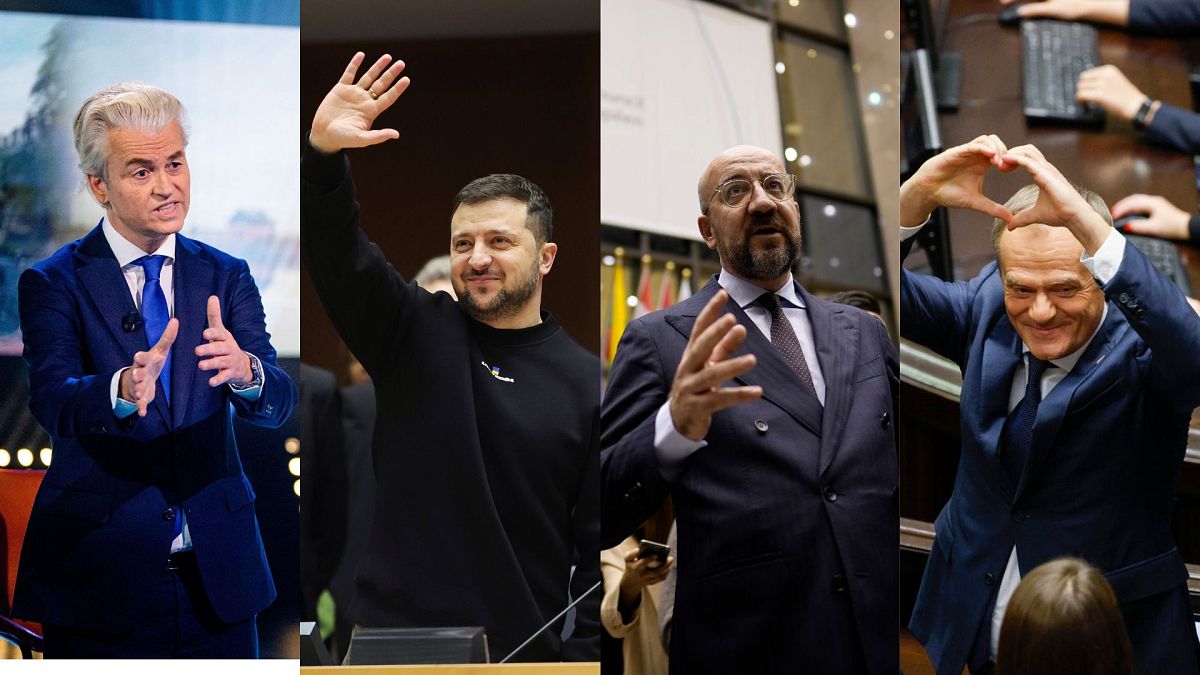
As the year draws to a close, Euronews breaks down ten pivotal moments that shaped Europe in 2023.
1. One year of war in Ukraine
Ukrainian President Volodymyr Zelenskyy marked one year since the outbreak of Russia’s war in Ukraine with a whirlwind tour of London, Paris and Brussels. He called on allies to step up their support for the war-torn country, and in Brussels pitched for Ukraine’s speedy accession to the European Union.
“This is our Europe. These are our rules. This is our way of life. And for Ukraine, it’s a way home,” Zelenskyy told a full house of the European Parliament in Brussels.
2. Finland joins NATO
Finland became NATO’s 31st member on April 4, doubling the alliance’s border with Russia.
The invasion of Ukraine prompted Finland and Sweden to abandon their decades-long policy of military non-alignment, with both countries applying for NATO membership in May 2022.
Turkish President Recep Tayyip Erdogan stalled Sweden’s accession over concerns the country was harbouring Kurdish militants. He dropped his veto in July and the Turkish parliament gave its consent in December, paving the way for Sweden’s accession in early 2024.
3. The Adriana migrant boat disaster
An overloaded fishing boat carrying up to 750 migrants capsized off the coast of Pylos, Greece on 14 June, in one of the deadliest shipwrecks in the Mediterranean.
A search and rescue operation by Greece’s Hellenic Coast Guard (HCG) and the military rescued 104 men and recovered 82 bodies. Still, officials later confirmed over 500 were presumed to have lost their lives.
Conflicting testimonies raised questions as to whether an HCG rescue boat had caused the boat to sway and capsize. The EU’s border agency Frontex also faced mounting scrutiny over its part in the response operation.
4. EU’s Nature Restoration Law survives knife-edge vote
A new bill aiming to rehabilitate at least 20% of EU land and seas by 2030 survived a knife-edge vote in the European Parliament in July.
Right-wing parties, particularly the European People’s Party (EPP), had led a bitter campaign in a bid to entirely reject the legislation, citing a threat to the livelihood of farmers and fishers. The vote was seen as a victory for progressives, environmentalists and conservationists, who held out against fierce backlash in a bid to protect Europe’s biodiversity.
The law passed its next hurdle in November when lawmakers struck an agreement with the bloc’s member states.
5. Greece fights largest wildfire on record in EU
The largest wildfire ever recorded in the EU raged in north-eastern Greece in August, as the EU mobilised half of its aerial firefighting fleet to contain the blaze.
The most recent data from the European Forest Fire Information System (EFFIS) suggests that over 463,000 hectares of land burned across the EU’s 27 member states this year alone, with Spain’s canary islands, the Greek islands of Rhodes and Corfu, Portugal’s southern Algarve region and the Italian island of Sicily all experiencing intense summer blazes.
6. War erupts between Israel and Hamas
Hamas militants’ deadly rampage in Israel on October 7 left more than 1,100 dead and around 250 hostages. It marked the beginning of a devastating war that has since raged relentlessly, with just one six-day respite in fighting in late November. More than 20,000 Palestinians are estimated to have lost their lives in the conflict.
The humanitarian crisis engulfing the Gaza Strip prompted mixed reactions from Europe. While some nations called for a humanitarian ceasefire from the outset, others resisted, citing Israel’s right to self-defence and the need to eradicate Hamas through military means.
By early December, a majority of the EU’s member states backed a United Nations resolution calling for an “immediate humanitarian ceasefire.”
7. Pro-EU opposition takes power in Poland
Opposition parties secured enough votes to oust the ruling Law and Justice party (PiS) in Poland’s October election, paving the way for former European Council president Donald Tusk to become the new prime minister.
Although PiS was the largest party at 35% of the vote, Tusk was able to form a coalition government after his Civic Coalition party struck an agreement with two other pro-EU parties, the Third Way Party and the New Left.
Tusk has since taken the first steps to change policies related to the rule of law, launching the process to join the European public prosecutor’s office and sacking the bosses of state TV and radio, which had been under the tight grip of his populist predecessors.
8. Amnesty deal sparks protests in Spain
July’s inconclusive general election left no clear road to government for the right- or left-wing coalitions in Spain. But Pedro Sánchez’s socialists struck a deal with Catalan separatists to form a government in exchange for a controversial amnesty for those who participated in the failed attempt at secession from Spain in 2017.
The deal sparked weeks of violent protests in Spain’s capital Madrid, and invited scrutiny by officials in Brussels, amid concerns about potential rule of law breaches.
9. Geert Wilders wins Dutch election
The Dutch snap election delivered a shock result in November, as the Eurosceptic, anti-Islam Party for Freedom (PVV) snatched victory after a last-minute surge in the polls.
PVV leader Geert Wilders has since vowed to tame his hardline policies, after previously calling for a ban on mosques and Islamic headscarves, and a referendum on the Netherlands’ exit from the EU.
But with centre-right parties hesitant to join forces with Wilders, he could fail to piece together a 76-seat majority in the ongoing coalition talks.
10. Ukraine, Moldova and Georgia inch closer to EU membership
In a historic move, EU nations approved opening formal talks on Ukraine and Moldova’s EU membership in December, following the European Commission’s recommendation.
Viktor Orbán abstained from the vote in a choreographed political move, as he left the room momentarily to allow the remaining 26 leaders to take a unanimous decision. Georgia was also made an official candidate for EU accession.
Russia’s war in Ukraine has injected a new sense of urgency into the EU’s enlargement, as the bloc looks to integrate its eastern flank, including war-torn Ukraine.
Brussels had also hoped to approve a €50-billion long-term fund for Ukraine in a December summit but faced resistance from Orbán.
The decision has been postponed to February when leaders could be forced to piece together a makeshift fund outside the core EU budget if Orbán continues to dig in his heels.

World
Prosecutors Urge 40 Years in Prison for Attacker of Pelosi's Husband
World
Top secret Iranian drone site used by IRGC, terror proxies exposed by opposition group
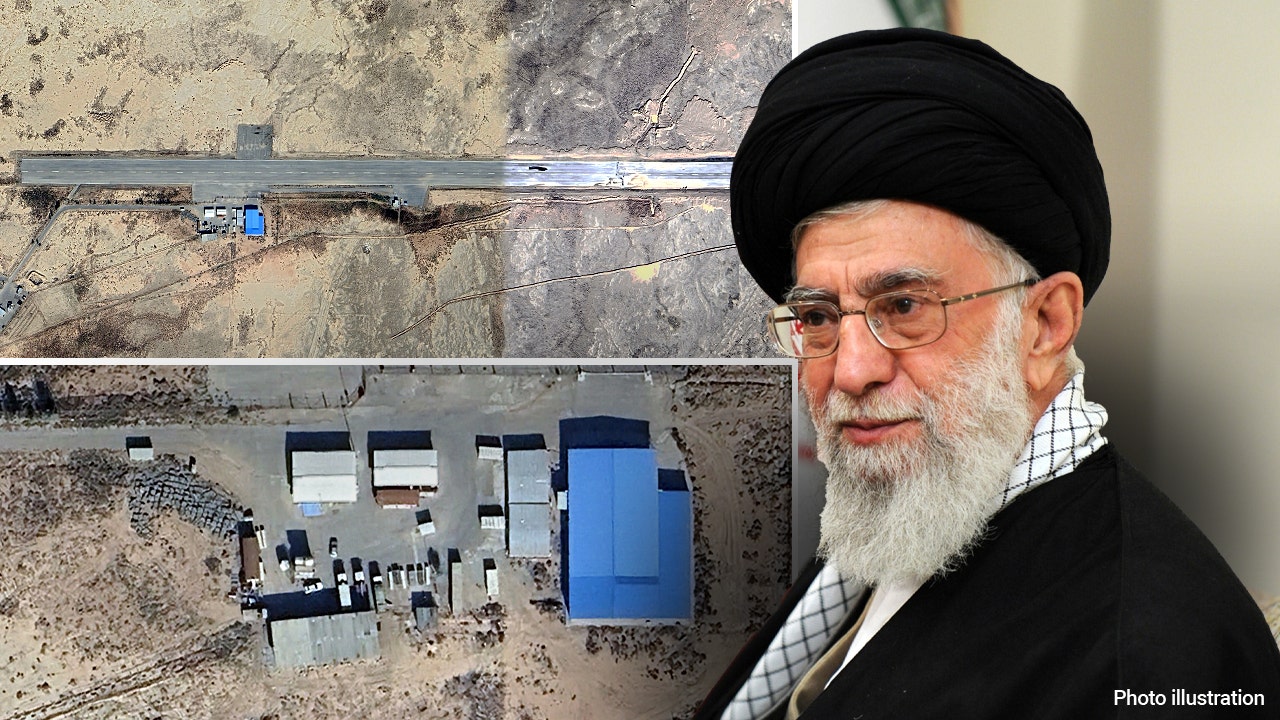
The People’s Mojahedin Organization of Iran (MEK), an exiled Iranian resistance group, provided a report to Fox News Digital presenting evidence of a top-secret unmanned aerial vehicle (UAV) site in the Islamic Republic of Iran, north of Qom City in the Ganjine region.
According to the report, members of the Islamic Revolutionary Guard Corps (IRGC) are trained to use “all kinds of drones” at the base, including the Mohajer series, manufactured by Qods Aviation Industry. Employees of Qods Aviation Industry also reportedly use the site to train small groups of Iranian proxy operatives of Hezbollah, as well as members of Iranian proxy groups from Syria, Yemen and Iraq, to use the Mohajer-4 drone platform.
The National Council of Resistance of Iran (NCRI), based on information from the MEK, told Fox News Digital that the site is a proving ground for Mohajer-4, Mohajer-6, and Mohajer-10 drones.
Alireza Jafarzadeh, deputy director of NCRI’s Washington, D.C., office, told Fox News Digital that “seven months into the regional conflict, it has become evident that the regime in Tehran is the proverbial ‘head of the snake’ of belligerence and terror export in the Middle East. As such, Western governments must exercise firmness instead of accommodation and engagement in dealing with Tehran and hold it to account for its malign activities.”
UNIVERSITY OF TEHRAN PROFESSOR SAYS PROTESTERS AT US COLLEGES WILL SUPPORT IRAN IN AMERICAN CONFLICT
The Iranian Mohajer-4 drone, manufactured by Qods Aviation Industries and tested at the Ganjine airfield, has been proliferated widely according to online documents from the U.S. Army Training and Doctrine Command. (Courtesy of National Council of Resistance of Iran)
Qods Aviation Industry is listed on the Treasury Department’s Specially Designated Nationals and Blocked Persons List, as is its new moniker, Light Airplanes Design and Manufacturing Industries.
The newest drone in its arsenal, the Mohajer-10, can carry a payload of 300 kilograms for a range of 2,000 kilometers, according to Breaking Defense. Released in August 2023, the drone has a 450-liter fuel tank and can stay airborne for 24 hours. In a photo of the new drone shared on an Iranian television station, text in both Hebrew and Persian advised viewers to “prepare your shelters,” Reuters reported.
Brett Velicovich, a U.S. Army veteran and author of “Drone Warrior: An Elite Soldier’s Inside Account of the Hunt for America’s Most Dangerous Enemies,” said that the schematics for deadly Mohajer- and Shahed-series drones are being exported to Iranian proxies around the world. “One or two guys can launch one of these drones from the middle of a field…and they have the capability to conduct just as powerful a strike as major nation states could before,” Velicovich said.
Velicovich added this allows Iran to “sow chaos and discord” while also “having plausible deniability.” He claims the regime “want to use these long-range drone systems to show that they somehow have control over the Middle East and the region.”
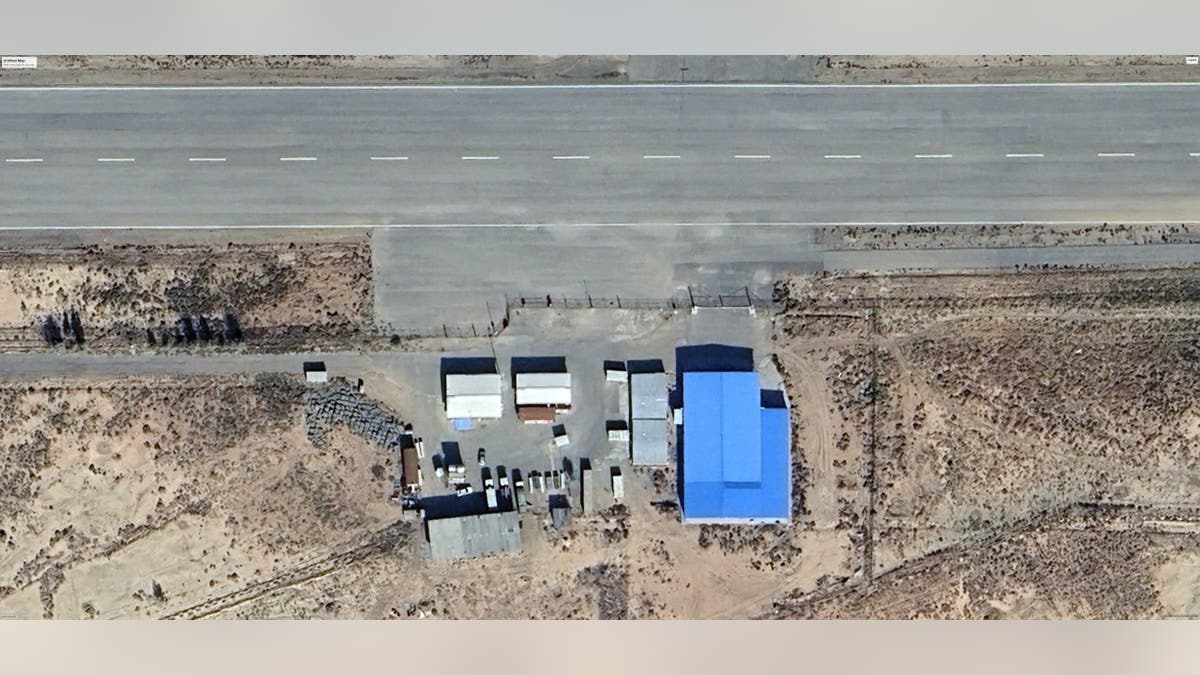
A new 30- by 40-meter hangar was added to the UAV testing site, 10 kilometers north of Qom City, in 2020. Qods Aviation Industry, a sanctioned entity, trains Islamic Revolutionary Guard Corps members and Iranian proxies at the site. (Courtesy of National Council of Resistance of Iran)
Drones have played a role in the escalations taking place overseas following Oct. 7. The United States Institute of Peace notes that “U.S. forces deployed across the Middle East were attacked more than 160 times by pro-Iranian militias” between October 2023 and February 2024.
One of those strikes was deadly. On Jan. 28, an Iranian proxy used a drone to kill three U.S. service members in Jordan. National Security Council spokesperson John Kirby stated that the Islamic Resistance in Iraq was behind the attack. He did not state which of the Iranian proxy groups under the resistance umbrella bore responsibility. The Pentagon stated it could not provide answers to Fox News Digital’s request for information about the group behind the attack or the type of drone that was used. United States Central Command told Fox News Digital that it does not comment on ongoing investigations.
BIDEN ADMIN SANCTION WAIVERS GIVE IRAN ACCESS TO BILLIONS IN FUNDS TO KEEP WAR EFFORTS GOING, EXPERT SAYS
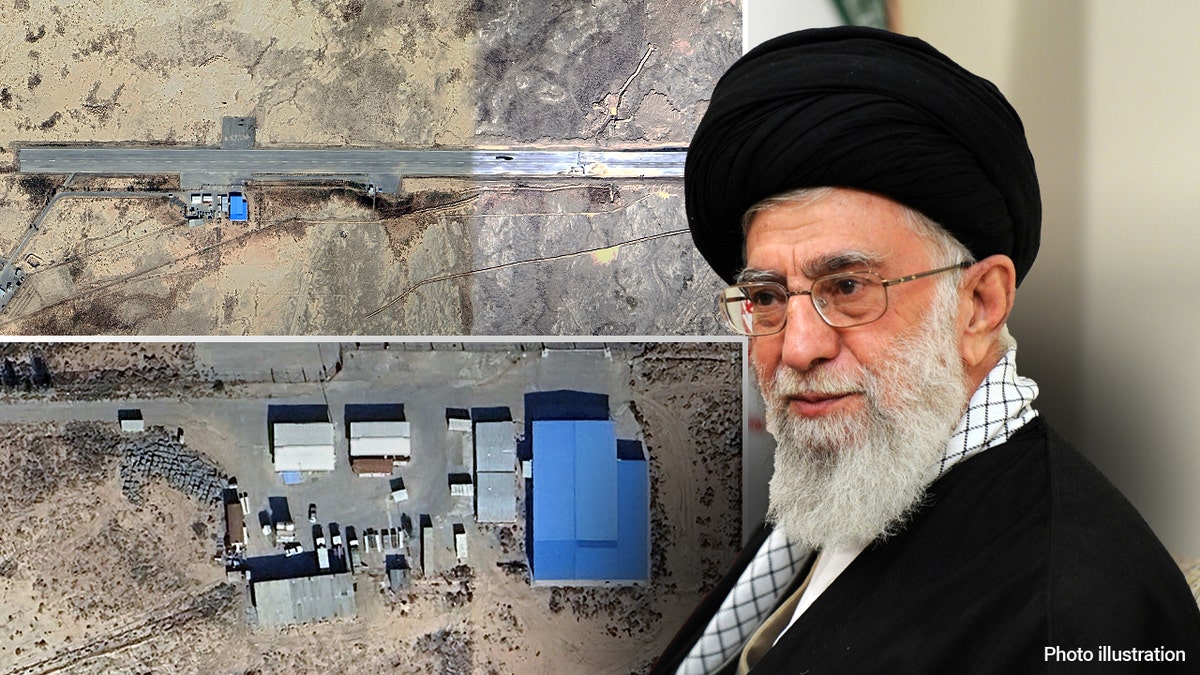
An Iranian opposition group exposed a top-secret drone base in the country. It is said Supreme Leader Ayatollah Ali Khamenei has overseen the country’s drone project since 2004. (Photo: Ayatollah Ali Khamenei: Getty Images/Base: NCRI)
On Apr. 13, Iran fired dozens of drones, including the Shahed-136, and hundreds of missiles at Israel in retaliation for an Apr. 1 bombing that killed seven IRGC members at the Iranian embassy compound in Damascus, Syria. The Israel Defense Forces (IDF) did not respond to a request for comment about whether the Mohajer system was used against Israel in Iran’s attack, or in any attacks since Oct. 7.
Velicovich recently traveled to Israel, where he said he witnessed “a lot of activity” at the northern border, where the IDF “are fighting with Hezbollah…in a sort of covert battle.” Drones are part of that conflict, though Velicovich did not report witnessing Iranian drones at the northern border.
“Israelis have extremely strong defenses against UAVs,” Velicovich said. “But Iranian scientists are everyday trying to develop something new and testing those airwaves to figure out how to get around the Iron Dome, how to get around the Patriot missile system,” he added.
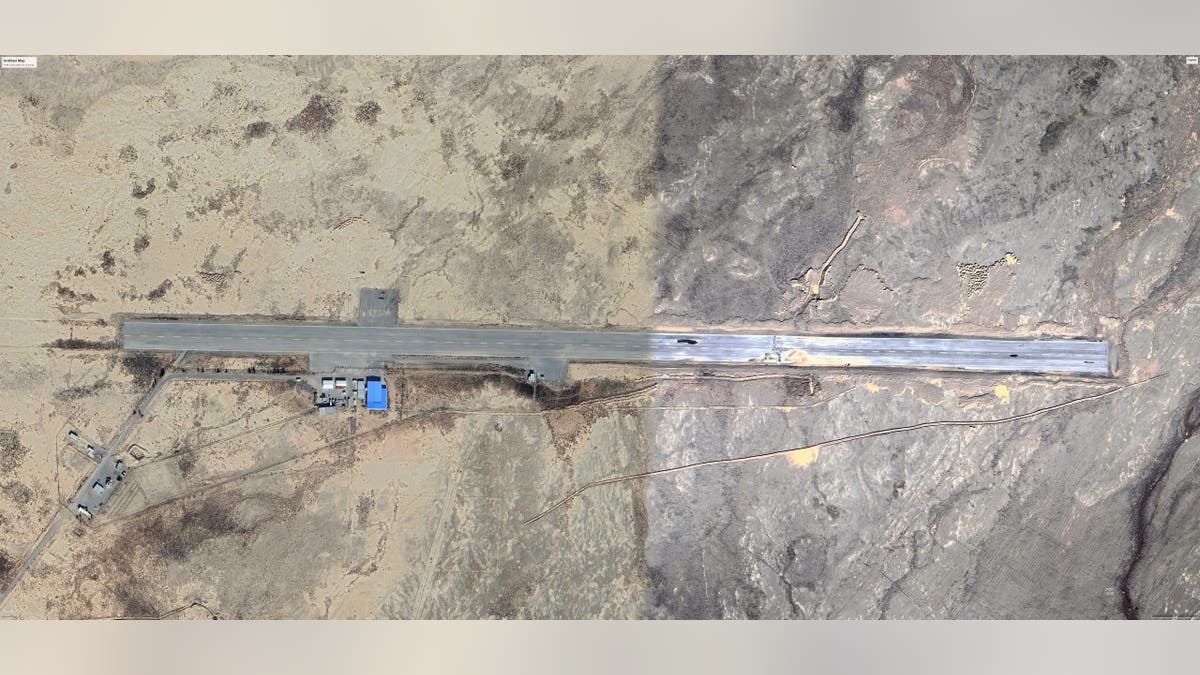
The UAV proving ground in Ganjine, Iran, where the Mohajer-series drone is tested, and Iranian proxies are trained in drone operations. The airstrip has been enlarged twice since 2007. Now 1,500 meters in length, larger drones can be tested at the site. (Courtesy of National Council of Resistance of Iran)
There has been no indication of whether Mohajer series drones have been utilized by Iran, its proxy Hezbollah or other proxy groups attacking Israel or U.S. forces since Oct. 7. The MEK was not aware of evidence that the drone site in Qom has been used in any attacks against Israel since Oct. 7.
According to online documents from the U.S. Army’s Training and Doctrine Command (TRADOC), the Mohajer system has proliferated to Iran’s allies. TRADOC writes that the Mohajer-4 platform, which entered mass production in 1999, has been distributed “widely,” including to non-state actors. Used for surveillance and to interdict drug smugglers, the Mohajer-4 can also be equipped with the Hydra unguided rocket. It can remain airborne for seven hours.
AGITATOR BEHIND ‘DEATH TO AMERICA’ CHANTS IN CHICAGO CONTRIBUTES TO IRAN STATE TV, HEZBOLLAH-LINKED CHANNEL
The Mohajer-6 entered production in 2018. Syria, Hezbollah, Ethiopia, the Russian Federation, Iraq and Venezuela have access to the drone, according to TRADOC. Army documents state the drone, which can be airborne up to 12 hours, can be launched and recovered from a runway, and can carry “a multispectral surveillance payload, and/or up to two precision-guided munitions.”
The MEK provided documents and aerial imagery to Fox News Digital showing how the Qom site has expanded in recent years. According to translated documents MEK provided from the Iranian Armed Forces’ Real Estate and Land Organization, the site was first proposed as a UAV testing ground in February 2005. In May 2006, 1,800 hectares (more than 4,400 acres) of land near Qom were handed over to the Ministry of Defense and Armed Forces Logistics.
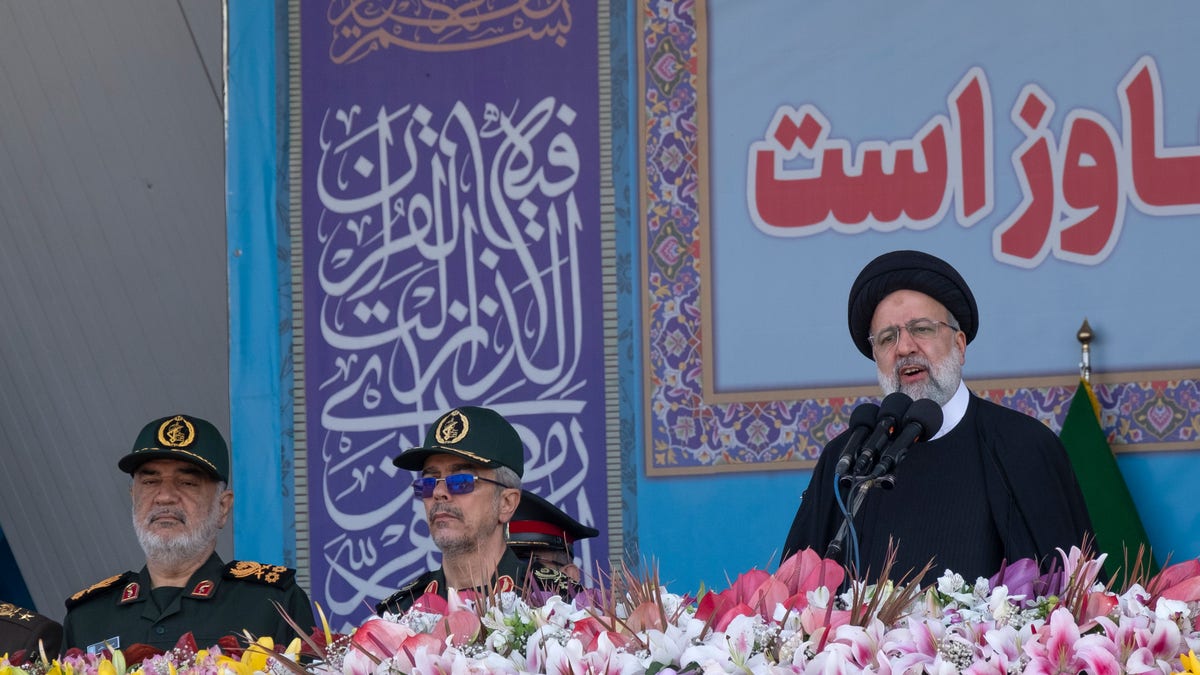
Iranian President Ebrahim Raisi (R) addressed while standing next to commander-in-chief of the Islamic Revolutionary Guard Corps (IRGC), Hossein Salami (L), and Mohammad Bagheri, Chief of Staff for the Armed Forces of the Islamic Republic of Iran, during a military parade marking Iran’s Army Day anniversary near the Imam Khomeini shrine in the south of Tehran, April 18, 2023. Raisi said, we will destroy Haifa and Tel Aviv if Israel takes ”the slightest action” against Iran. (Morteza Nikoubazl/NurPhoto via Getty Images)
The MEK reports that just 949 hectares have been used for the site. Aerial photographs show the site’s first 500-meter runway, created in 2007. In 2014, photos demonstrated that the runway was expanded to 1400 meters. Photos show the runway was further enlarged in 2020 to 1500 meters “so larger drones could also be tested.” Additional photos show that a hangar of about 30 by 40 meters was added in 2021.
According to the MEK’s report, asymmetric warfare forms “a critical part of a deliberate strategy” that relies on “extensive use of drones and missiles, which the regime is capable of manufacturing with the support of its allies. Proxies execute these operations on behalf of the regime.” The MEK also cites “intelligence sources” claiming that Supreme Leader of Iran Ali Khamenei “has personally overseen Iran’s drone project since 2004.”
The MEK urges other Western states to follow suit with the U.S.’ 2019 designation of the IRGC as a foreign terrorist organization.
Velicovich noted that “Iran was the orchestrator, in my opinion, on the Oct. 7 attacks.” He explained that the regime used “one of their proxy groups, to not pin the full blame on them, but it’s their money and material.” He worries that the U.S. government “doesn’t have a handle right now on the true amount of drone systems that the Iranians are trying to build. And we won’t feel the effect tomorrow. It will be years from now,” he warned.
World
Borrell: Spain, Ireland and others could recognise Palestine on 21 May

Spain, Ireland and other like-minded EU member states could recognise the State of Palestine on 21 May, the EU’s High Representative for Foreign Affairs, Josep Borrell, has said.
In an interview on Spanish national radio RNE on Thursday, Borrell was asked to confirm reports in Irish media that Spain, Ireland and a handful of other EU member states could formally recognise the State of Palestine on May 21.
Borrell confirmed the plans, adding that the Spanish foreign minister, José Manuel Albares, had told him that 21 May was the proposed date.
Borrell had been attending an event to celebrate Europe Day in Madrid along with Albares hours earlier.
Irish diplomatic sources have confirmed to Euronews that a group of European countries is proposing to recognise a Palestinian state during the month of May, with the 21st a possible date, but not set in stone.
The source added that the date could shift to allow other countries, including non-EU country Norway, to move in tandem.
Borrell also mentioned Slovenia as one of the countries that could join the joint recognition after the government in Ljubljana passed a decree on recognising the Palestinian state earlier on Thursday.
The EU’s top diplomat also added that Belgium could soon follow suit, as it was delaying the recognition while waiting for more countries to get on board.
Malta could also join, having backed a declaration of intent during a March summit of the European Council.
It comes as the UN General Assembly votes on Friday on a resolution to make the State of Palestine a full member of the United Nations, where they currently hold observer status.
Nine of the EU’s 27 member states currently recognise Palestinians’ right to a state according to the so-called 1967 borders, which include the West Bank, the Gaza Strip and East Jerusalem.
Malta, along with eastern states such as Bulgaria, the Czech Republic, Romania and Slovakia, have recognised the Palestinians’ right to statehood since 1988. In 2014, Sweden became the first member state to unilaterally recognise Palestinians’ right to statehood while a member of the bloc.
Although the European Union supports the so-called two-state solution – which would deliver statehood for Palestinians – and is the single biggest donor of aid to Palestinians, it has not yet unanimously backed the recognition of a Palestinian state.
European Council President Charles Michel told Euronews in April that member states willing to recognise the State of Palestine should move in tandem in order to “trigger significant progress” in building peace in the war-torn region.
-

 Politics1 week ago
Politics1 week agoThe White House has a new curator. Donna Hayashi Smith is the first Asian American to hold the post
-

 News1 week ago
News1 week agoPolice enter UCLA anti-war encampment; Arizona repeals Civil War-era abortion ban
-

 Politics1 week ago
Politics1 week agoAdams, NYPD cite 'global' effort to 'radicalize young people' after 300 arrested at Columbia, CUNY
-

 World1 week ago
World1 week agoTurkish police arrest hundreds at Istanbul May Day protests
-
)
) Movie Reviews1 week ago
Movie Reviews1 week agoThe Idea of You Movie Review: Anne Hathaway’s honest performance makes the film stand out in a not so formulaic rom-com
-

 News1 week ago
News1 week agoSome Republicans expected to join Arizona Democrats to pass repeal of 1864 abortion ban
-

 News1 week ago
News1 week agoSome Florida boaters seen on video dumping trash into ocean have been identified, officials say
-

 World1 week ago
World1 week agoIn the upcoming European elections, peace and security matter the most



